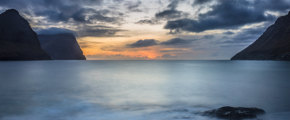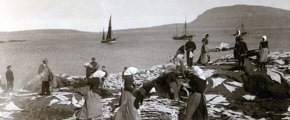Greenland halibut
The Greenland halibut is a flatfish that lives on the sea floor in the cold waters of the Arctic Ocean and the North Atlantic. Its meat is snowy white with a delicate and sweet taste. Halibut is ideally paired with other flavoursome foods.
The Greenland halibut has a sweet taste that is quite mild, and the meat consists of relatively large flakes. This works particularly well in sushi. The meat is firm, and also very lean, which needs to be taken into consideration when preparing it. The risk of over cooking is high, but can be counteracted by using high temperatures, keeping the skin on, adding moisture throughout the process, or brining.
Halibut is quite versatile and can be prepared in many different ways – baked, deep-fried, grilled, poached and steamed, to name a few. Greenland halibut is also served as sushi. Halibut also works well with breading and is excellent deep-fried. The leanness of the meat makes it ideal for creamy fish salads and is often used for this in the Faroe Islands.
Greenland Halibut is rich in Omega-3 fatty acids, vitamins B6 and B12, as well as magnesium, potassium and selenium.
Biology
The Greenland halibut (Reinhardtius hippoglossoides) is a flounder. The left eye has migrated during the fish's development so that it is on the right side of the head. However it has not moved as far as in bottom-dwelling flatfish. The left eye never fully shifts to the other side but remains on the dorsal ridge of the forehead, giving it the appearance of a cyclops from some angles.
The Greenland halibut is slightly different from other halibuts as it does not have two distinctive sides. Its muscles are equally well developed on both sides making it possible for the Greenland halibut to swim in a vertical position.
Its colour is nearly uniform but the left side is slightly paler. The Greenland halibut is dark in colour – brown or charcoal - sometimes with a few lighter spots on the sides. It has two long fins on each side – a dorsal and a posterior fin – that almost cover its entire circumference, with a small pelvic fin on the stomach. The Greenland halibut is a carnivore and mostly eats prawns, krill, capelin and redfish.
In Faroese the Greenland halibut is called Svartkalvi - Black Halibut. Greenland halibut is also called Black halibut.
The Greenland halibut prefers waters below 4 degrees Celsius and a sandy seabed. They can be found at depths ranging from 200 to 2000 metres, from the east coast of North America, from the western to the eastern coasts of Greenland, across the North Atlantic and the Faroe Islands to the Norwegian coast and all around the Barents Sea.
In the waters around the Faroe Islands, Greenland halibut can be found mainly at 450-600 metres depth where the sea temperature is 2-3 degrees Celsius .
They are normally from 80 to 100 cm long and weigh around 11-25 kg, but they can grow up to 120 cm and weigh over 40 kg.
The Faroese mostly fish Greenland halibut in Faroese waters. The Faroe Islands also have bilateral and multilateral agreements to fish for Greenland halibut in other national zones, such on the eastern coast of Greenland and in the Norwegian Sea. Faroese vessels use trawls and fishing nets to fish for Greenland halibut.




